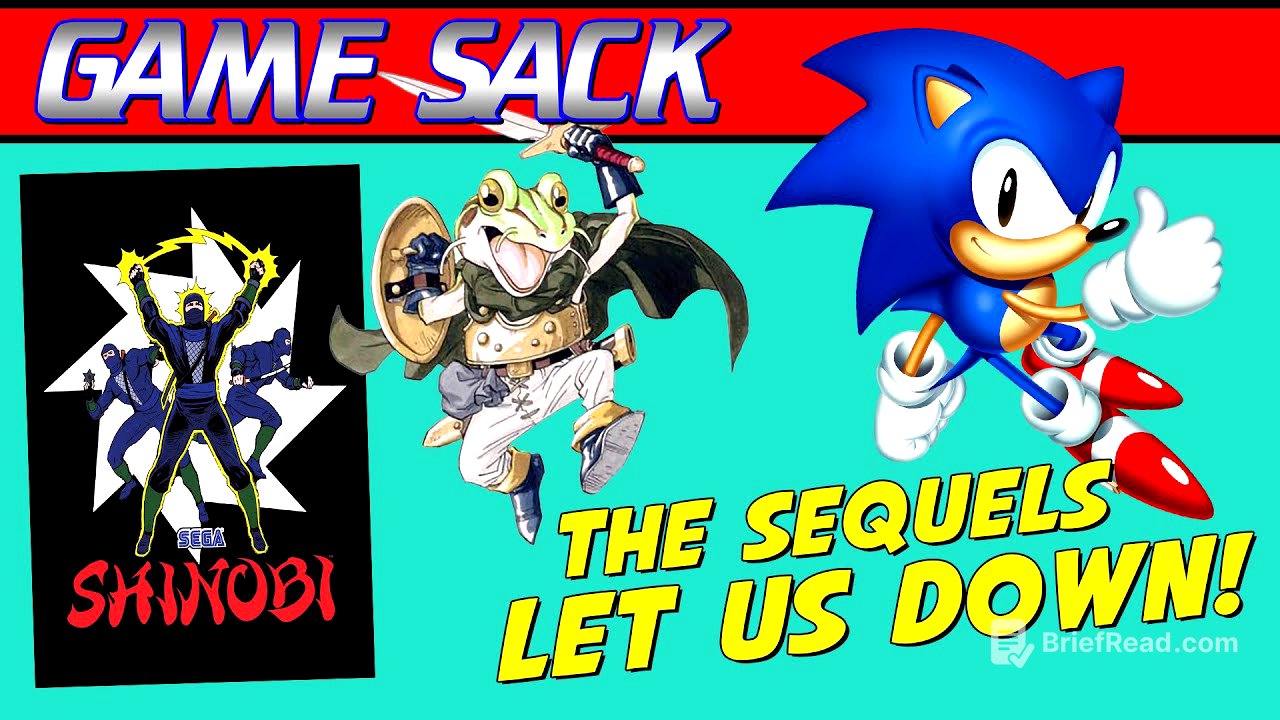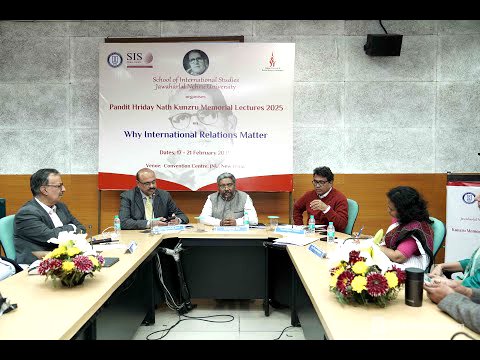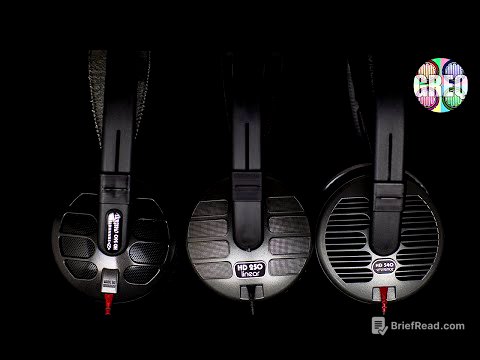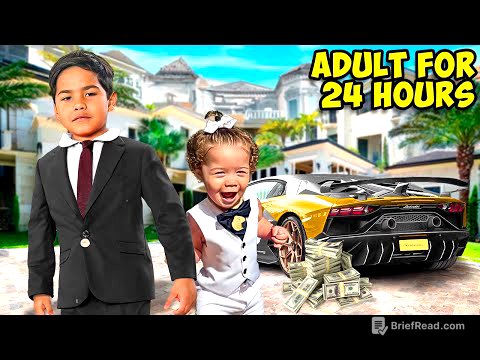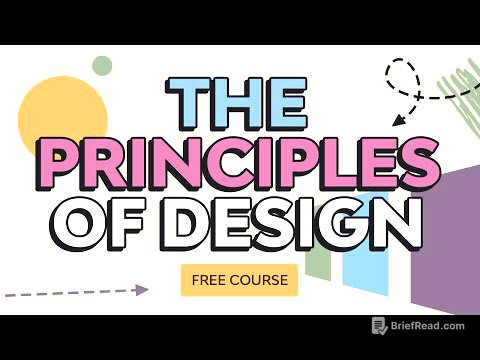TLDR;
This Game Sack episode reviews several video game sequels and follow-ups that failed to live up to the standards set by their predecessors. The episode covers games across various consoles and genres, highlighting the specific shortcomings of each sequel, such as poor gameplay mechanics, disappointing graphics, and uninspired music.
- Blaster Master 2 (Genesis)
- After Burner 3 (Sega CD)
- Chrono Cross (PlayStation)
- Thunder Force 6 (PlayStation 2)
- ActRaiser 2 (Super Nintendo)
- Shadow Dancer (Arcade)
- Shenmue 3 (PlayStation 4, PC)
- Sonic the Hedgehog 4: Episodes 1 & 2
Intro [0:12]
The episode begins by stating that video game sequels often fail to surpass their predecessors, unlike movies, where sequels tend to improve. The host introduces the topic of disappointing video game sequels and follow-ups.
Blaster Master 2 (Genesis) [0:29]
The host discusses Blaster Master, released on the NES in 1988, praising its mazes, tank controls, and the ability to explore as a little guy. The graphics and music were also highlighted as excellent for their time. The host then transitions to Blaster Master 2, released on the Genesis in 1993. Unlike the original, Sunsoft outsourced its development to Software Creations, a Western developer. While the visuals initially appear impressive, the background remains static. The tank controls are decent but feel lighter, and the little guy's ladder navigation is slow. Each level features multiple boss fights and ends with overhead tank segments that are not enjoyable due to excessive momentum. The game lacks the design quality of the original and suffers from poor sound and music.
After Burner 3 (Sega CD) [4:25]
The host reminisces about the arcade game After Burner, particularly Afterburner 2, and its ports on the Master System and Genesis. The Genesis port was considered good but still lacked elements from the arcade version. The host then discusses After Burner 3 for the Sega CD, which was a major disappointment. The graphics are worse than Afterburner 2 on the Genesis, and the game defaults to a less exciting cockpit view. The visuals are sparse and choppy, with ground objects appearing before the horizon. The game is a port of Strike Fighter, a Japan-only sequel to G-LOC. While the music has awesome CD quality, the game is still a disappointment, especially compared to the 4-meg cartridge game. The Japanese Mega CD version is even worse, with fewer choices and inferior music.
Chrono Cross (PlayStation) [7:59]
The host introduces Chrono Trigger, released on the Super Nintendo in 1995, praising its time-traveling story, character development, tight gameplay, and top-notch music. The host then discusses Chrono Cross, released on the PlayStation in 1999, which was highly anticipated but ultimately disappointing. The story focuses on new characters, with some old characters making appearances. The game features 45 playable characters, which the host finds excessive. The game involves moving across two dimensions, with pre-rendered screens and choppy scrolling. Battles are slower, especially when using elemental attacks, and the game's progression feels bloated. The host found the game boring after 24 hours of play. While the music is incredible, the game feels like a chore compared to Chrono Trigger.
Thunder Force 6 (PlayStation 2) [11:40]
The host praises Thunder Force 4 (Lightning Force on the Genesis) as one of the best shooters of all time. The host then discusses Thunder Force 6, released exclusively in Japan for the PlayStation 2 in 2008. Initially in development for the Dreamcast, the game was later developed by Sega. The game is a 2D side-scrolling shooter with polygon graphics. Players start with all weapons and collect enemy souls to charge an "over weapon." Levels are short, and bosses are easy. The level designs borrow from previous games, giving the game a low-budget, fan-made feel. A highlight is the section where you fight ships from previous Thunder Force games. The game is short, not very challenging, and graphically basic compared to other PS2 shooters. The music is not fitting for a Thunder Force game.
ActRaiser 2 (Super Nintendo) [16:44]
The host introduces ActRaiser, released on the Super Nintendo in 1991, praising its hack-and-slash action and god mode sections. The graphics and music were also highlighted. The host then discusses ActRaiser 2, released in 1993, which removes the god mode sections. The game is pure action, but the main character moves slowly. The character has new moves, including a diagonal sword swing and a double jump, but the controls are awkward. The stage design is poor, with frustrating jumps and enemies appearing out of nowhere. The game is hard, but can be somewhat enjoyable with practice. The visuals are well done, and Yuzo Koshiro returns to do the music, which is more atmospheric.
Shadow Dancer (Arcade) [21:09]
The host discusses Shinobi, released in arcades in 1987, praising its ninja action, boss fights, and first-person bonus stages. The host then discusses Shadow Dancer, released in arcades in 1989 as an indirect sequel, which is considered bad. The game brings over most of the game design from Shinobi but adds a dog companion. The dog can grab enemies, but the level design and enemy placement make the dog less useful. Instead of rescuing children, you rescue bombs. The game features one-hit deaths, and the stages are relentless. The physics are downgraded, and the game is slower and less responsive. The bonus stages are not as fun, and the graphics look unappealing. The audio is worse, with unsubstantial music and forgettable sound effects.
Shenmue 3 (PlayStation 4, PC) [25:02]
The host introduces Shenmue, released on the Dreamcast in 1999, praising its realistic world and menial activities. The host then discusses Shenmue 3, released for the PlayStation 4 and PC nearly 20 years later, which was a letdown. While the first two games were ahead of their time, this one feels behind the times. The story is weak, and the pacing is slow. The game is padded for length, and the village is not exciting. Players need to keep themselves fed, which doesn't add to the fun. The city is big but unpopulated, and there are no true Sega arcade games. The game feels like a low-budget indie game. Graphically, the game looks okay but not a huge leap from the Dreamcast titles. The biggest flaw is that not much happens, and the story is padded.
Sonic the Hedgehog 4: Episodes 1 & 2 [30:18]
The host discusses Sonic the Hedgehog, released in 1991 on the Genesis, and its sequels. The host then discusses Sonic the Hedgehog 4, Episode 1, released in 2010 for various platforms. The game was split into two episodes and is digital-only. The physics are off, and the game feels slower. The entire game feels like you're holding the controller in glue. The game only has four zones, and the designs are rehashed from old games. The bonus stages are ruined. The stage design is boring, and the visuals are ugly. The music ranges from not bad to quite bad. Sonic the Hedgehog 4 Episode 2 was released two years later. Tails has been added, and the gameplay relies on joining up with Tails. The visuals are better, but the developers went all out on the underwater parts, which are too slow. The boss fights take a long time. The music is not good. Neither episode captures the magic of the Genesis games. The host recommends playing Sonic Mania instead.
Outro [35:05]
The host concludes the episode, hoping it wasn't too negative. The host asks viewers to share their own disappointing sequels and follow-ups.
